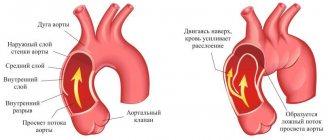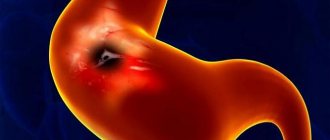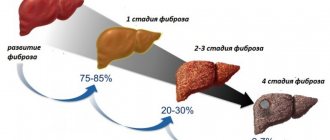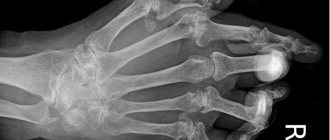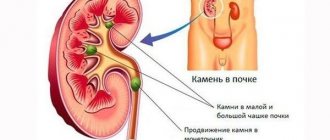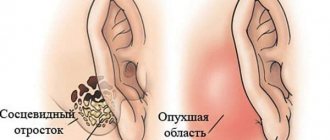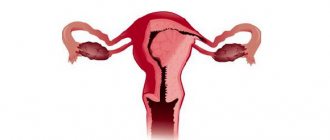Aspermia is a term that means the complete absence of ejaculate. Although in domestic healthcare this name is most often used to refer to the result of a clinical semen analysis, as a result of which sperm could not be detected in a man’s biological fluid. According to the latest criteria of the World Health Organization, published in 2010, one milliliter of sperm of an adult male should normally contain about 18 million active sperm. It is this concentration of germ cells that ensures rapid and effective fertilization.
Photo through a microscope. Normal sperm pattern. With aspermia, sperm are completely absent.
general description
In recent decades, more and more often the reason that a couple cannot have children is the man.
Bad heredity, bad habits, constant stress, lack of concern for one’s health - these are the main factors that can trigger the development of male infertility. One of the causes of infertility in men is azoospermia. This is a violation of sperm production, which is manifested by their complete absence in the seminal fluid. Depending on the etiology, obstructive azoospermia and non-obstructive azoospermia are distinguished.
The main symptom of the disease is the impossibility of natural conception, since due to the lack of sperm, fertilization of the egg does not occur. The diagnosis is made comprehensively, based on anamnesis, questioning and examination of the patient, data from laboratory and instrumental studies.
Treatment of obstructive azoospermia is surgical. If natural conception is impossible due to azoospermia, a woman can become pregnant only as a result of IVF.
| Sperm with azoospermia |
Possibility of fertilization with aspermia
The likelihood of a woman becoming pregnant from a man whose sperm analysis results in aspermia is zero. The fact is that in order for normal fertilization to occur, sperm must be sufficiently active, and in the case of aspermia, they are generally absent from a man’s biological fluid. In fact, in such a situation, the substance that is released during ejaculation cannot be called sperm, since it consists 100% of the secretion of the prostate gland.
Nowadays, this situation has begun to be used for commercial gain. In a surgical hospital, men undergo special operations that exclude the possibility of fertilization in the future, while outwardly everything looks the same. It is in such men that aspermia is registered in the ejaculate.
Classification
The following types of disease are distinguished:
- secretory azoospermia - occurs as a result of the cessation of sperm production in the testicles;
- excretory form - occurs due to blockage of the vas deferens;
- mixed form - combines the symptoms of the two above forms of the disease;
- temporary azoospermia - disappears on its own after eliminating the causative factor, does not require special therapy.
| Types of azoospermia |
Tactics for aspermia
As already mentioned, the cause of aspermia may not be organic, but functional pathology, which means that after a certain time, sperm analysis may independently return to normal. So, if you see aspermia in your own analysis, you shouldn’t immediately get upset. If you see the absence of sperm in the results of a repeat analysis, which you take according to all the rules, then you must urgently contact a urologist to find out its cause and subsequent treatment.
Causes of azoospermia
The disease is quite rare (diagnosed in 2% of men) and has two main forms, each of which has its own causes. In the obstructive form, sperm cannot come out due to blockage of the vas deferens. The secretory form occurs as a result of impaired spermatogenesis in the patient's testicles.
Possible causes of problems with seminal fluid transportation are:
- STD;
- hereditary predisposition;
- congenital pathologies of the structure of the reproductive system (for example, absence of the vas deferens);
- varicocele is a disease in which the vessels of the scrotum enlarge and dilate, which can lead to disruption of the transport of seminal fluid;
- mechanical damage, trauma, consequences of operations on the reproductive organs, stomach, spine;
- A vasectomy is a surgical procedure that makes a man sterile and unable to have children.
The secretory form of the disease most often occurs as a result of hormonal imbalance.
There are a number of factors that can trigger the development of the disease. These include:
- uncontrolled long-term use of certain medications;
- bad habits (tobacco smoking, alcohol abuse, drug addiction);
- hormonal disbalance;
- exposure to large doses of ionizing radiation on the body;
- retrograde ejaculation - with this pathology, sperm, instead of being thrown out, enters the bladder; the development of the disease can be triggered by spinal cord injuries, diabetes, taking certain medications and a number of other reasons;
- cryptorchidism (undescended testicles into the scrotum);
- exposure to pesticides on the body.
Folk remedies
Folk remedies should be used as adjuvant therapy. It is forbidden to treat aspermia only with their help. The action of folk recipes is aimed at restoring men's health, activating sperm and normalizing hormone levels in the male body.
Now there are many recipes with which you can solve the problem of the lack of sperm in the seminal fluid. The most popular and effective of them:
- A mixture of honey, lemon, cognac and chicken egg. The product is prepared from 3 lemons, 200 ml of liquid bee honey and the same amount of cognac. The ingredients are thoroughly mixed with each other, after which 3 chicken yolks are added to them. Take 1 tablespoon of the mixture three times a day before meals.
- Flaxseeds. 150−200 g of product should be fried in a frying pan. Then the seeds are thoroughly crushed to obtain a powdery slurry, to which 200 ml of honey is added. You need to take this folk remedy 1 tablespoon 3 times a day before meals.
- Rosehip and sage. You need to take 1 tablespoon of these plants and pour 200 ml of boiling water over them. The mixture is infused for 30-40 minutes, after which it is carefully filtered. You need to take 1 tablespoon no less and no more than 3 times a day.
- Periwinkle. 5 tablespoons of periwinkle should be filled with 500 ml of diluted alcohol or vodka. The mixture is infused away from light for 10 days. You need to take 1 teaspoon three times a day.
Symptoms
The main clinical sign of the disease is the absence of pregnancy in a woman with regular sexual intercourse without the use of contraceptives for a year or more, provided that the woman herself is completely healthy.
All other symptoms and complaints of the patient are usually associated with the underlying disease, which led to the occurrence of azoospermia in men.
These symptoms may include:
- erectile dysfunction;
- decreased libido;
- development of female type obesity;
- underdevelopment of the penis and testicles.
Diagnostics
If conception does not occur within a year of regular sexual activity and the partner is completely healthy, then the man must undergo a comprehensive examination to determine the possible causes of infertility.
First of all, you need to visit a surgeon who will conduct a standard examination and determine whether everything is okay with the testicles, whether they are enlarged, whether they are in the scrotum, and so on.
In addition, the doctor evaluates such indirect signs as the presence of obesity, gynecomastia, which can provoke the development of infertility. After this, the prostate and other organs of the reproductive system are examined.
The final diagnosis of azoospermia is confirmed by the results of a spermogram, a blood test for hormones and specific genes, and an ultrasound scan of the prostate and scrotum.
| Ultrasound of the prostate for azoospermia |
To find out the exact cause of the sperm production disorder in the patient's body, TESE may be performed. This procedure should be combined with sperm collection through a puncture and subsequent freezing. This is necessary for the subsequent use of germ cells in artificial insemination programs.
What tests need to be taken?
During the consultation, the doctor, in order to prescribe competent treatment, must familiarize himself with several things and ask the patient to take some tests.
What exactly does a doctor need to determine an accurate diagnosis:
- Disease history. A detailed medical record is one of the most important tools for understanding the conditions underlying the disorder.
- Physical examination. This procedure involves evaluating the genitals and testicles to ensure that all important parts are functioning correctly (especially the vas deferens).
- Urine analysis after ejaculation. This is done to check the presence of sperm in the urine, which confirms retrograde ejaculation as the cause of aspermia.
- Blood tests, including tests for follicle-stimulating hormone and testosterone. Decreased testosterone levels result in very low sperm count.
- Radioimmunoassay (RIA). This test is used to check the levels of sex hormones in the blood. The results show that with aspermia, the level of testosterone and follicle-stimulating hormone decreases, while luteinizing hormone, on the contrary, increases.
- Examination of seeds under a microscope. This is important for diagnosing aspermia.
- Chemical analysis of sperm. This test will show the concentration of fructose.
- Ultrasound examination and magnetic resonance imaging. This is done to see if there is damage to the structure of the prostate gland and seminal vesicles.
Treatment of azoospermia
How can azoospermia be cured? The choice of treatment method depends on the form of the disease, the patient’s age, his current state of health, and the presence of concomitant pathologies.
If the cause of blockage of the vas deferens is inflammatory diseases of the patient’s reproductive organs (prostatitis, orchitis), then anti-inflammatory therapy is prescribed.
Prostate cyst, cryptorchidism, varicocele, which can also cause the development of azoospermia, are treated surgically. Nowadays, minimally invasive microsurgical operations are used to eliminate these pathological conditions of the body. In the congenital form of the disease, surgical plastic surgery of the vas deferens is ineffective.
The success of therapy for the secretory form also largely depends on the causes of its occurrence. For endocrine disorders, the patient is prescribed courses of treatment with gonadotropic hormones.
When treating azoospermia, which is temporary, the causative factors are first eliminated. In addition, the patient is prescribed a special diet high in microelements (especially selenium and zinc) and vitamins.
If conservative treatment is ineffective or not practical at all, freezing the sperm obtained from testicular biopsy is recommended. This is necessary for the IVF procedure for azoospermia.
| Testicular biopsy for azoospermia |
Free consultation with a urologist
Aspermia is the absence of sperm, or more precisely, the absence of ejaculation during sexual intercourse. The concept of aspermia should not be confused with azoospermia - the absence of sperm in semen. Aspermia is one of the causes of male infertility.
Causes of aspermia
Aspermia occurs when:
- retrograde ejaculation. Retrograde ejaculation causes infertility in less than 1% of cases. 15% of men with aspermia experience retrograde ejaculation.
- obstruction of the ejaculatory duct (congenital and acquired).
A man with aspermia feels ejaculation during sexual intercourse, but there is no release of seminal fluid from the urethra.
Although the process of ejaculation is considered as a single event, it consists of two phases: the emission phase and the ejection phase. Emission is the process by which sperm accumulates in the ampullary portion of the vas deferens near the prostate. After which the second phase begins - the release of sperm from the penis. During orgasm, ejaculate is ejaculated from the penis as a result of rhythmic contractions of the pelvic muscles.
Causes of retrograde ejaculation
Retrograde ejaculation is a condition in which semen is ejected into the bladder rather than into the urethra. Normally, when a man ejaculates, the bladder sphincter contracts in the area of the internal opening of the urethra, which prevents sperm from being thrown into the bladder, and the sperm is released through the external opening of the urethra. Retrograde ejaculation occurs as a result of dysfunction of the bladder sphincter. The causes of dysfunction of the bladder sphincter may be defects in the innervation of the smooth muscles of the sphincter or weakness of the muscular system. Aspermia caused by retrograde ejaculation may be the result of postoperative complications (after surgical treatment of prostatitis, testicular cancer, etc.) or nerve damage in certain diseases. In addition, retrograde ejaculation can be associated with conditions such as diabetes (32% of diabetics suffer from aspermia), multiple sclerosis, spinal cord injury, spina difida (spina bifida), hypospadias, exstrophy of the bladder or cloaca, etc. Some medications can also cause aspermia facilities:
- Tamsulosin is a drug for the treatment of benign prostatic hyperplasia;
- antihypertensive drugs for the treatment of arterial hypertension;
- antidepressants and antipsychotic drugs;
- anti-inflammatory drugs – naproxen;
- other drugs: methadone, phentolamine, guanethidine sulfate, etc.
Retrograde ejaculation is not a dangerous or life-threatening condition, but it is a cause of aspermia, and, consequently, male infertility. In addition, retrograde ejaculation can reduce the sensation of sexual pleasure during intercourse.
Causes of obstruction of the ejaculatory duct
Obstruction of the ejaculatory duct is the second possible cause of aspermia. Obstruction of the duct can be caused by congenital cysts of the vas deferens or inflammatory processes of the prostate, including prostate tuberculosis. Sexually transmitted infections (chlamydia, gonorrhea) are often the cause of obstruction. Obstruction of the ejaculatory duct may result from surgical interventions. Men with aspermia due to obstruction of the ejaculatory duct may experience pain in the perineal area, especially after ejaculation.
Diagnosis of aspermia
In diagnosing aspermia, collecting a detailed history of the disease is of great importance. It is very important to know whether ejaculation has always been absent or whether this is an acquired condition and the ejection of sperm from the urethra was previously observed during ejaculation.
You should not neglect a physical examination of the male reproductive system in order to make sure there are no abnormalities in the structure of the testicles, penis, and prostate. A spermogram is one of the mandatory tests that a urologist prescribes in case of infertility in a man. Normal ejaculate parameters:
- ejaculate volume 1.5-2 ml. It consists of 20% secretion from the prostate and vas deferens and 80% from the fluid of the seminal vesicles. The secretion of the Kupffer glands makes a minor contribution to the volume of ejaculate. Sperm content is more than 20 million/ml.
- The pH of the ejaculate is 7.2-8.0. A low pH may suggest an obstruction in the reproductive system.
However, if it is not possible to obtain ejaculate, then post-ejaculatory urine is used for analysis. If sperm are found in the urine, this indicates the presence of retrograde ejaculation.
It is necessary to prescribe a test to determine the level of follicle-stimulating hormone and testosterone in the blood.
Testing for sexually transmitted infections is important in diagnosing the causes of aspermia.
In addition, during the examination, transrectal ultrasound may be prescribed (Fig. 1.) to detect structural abnormalities in the structure of the prostate, seminal vesicles and ejaculatory ducts.
Fig.1. Transrectal ultrasound examination.
Fig.2. Ultrasound. The figure visualizes a cyst of the ejaculatory duct.
Treatment of aspermia
Treatment of aspermia due to retrograde ejaculation depends on the causes that caused it. If the cause of retrograde ejaculation is the side effects of medications taken by a man, they should be discontinued if possible.
If retrograde ejaculation is caused by other pathological conditions (diabetes, trauma, etc.), treatment can include medications that help increase the tone of the bladder sphincter and prevent the reflux of sperm into the bladder: pseudoephedrine, imipramine, phenylephrine, ephedrine, chlorpheniramine, brompheniramine. In approximately 1/3 of men, drug treatment has a positive effect if the cause of retrograde ejaculation is not postoperative complications. It should be noted that sometimes drug therapy has limitations due to side effects, which are especially common in young people. If one drug is ineffective, it should be changed to another.
Assisted reproductive technologies are used when drug treatment is ineffective. Sperm can be obtained from post-ejaculatory urine. To do this, the patient is prescribed drugs that increase the pH of urine, after which the man induces ejaculation, then collects post-ejaculatory urine. In laboratory conditions, sperm are isolated from urine. Sometimes prolonged exposure of sperm to urine, even with adjusted pH, causes sperm death. In this case, sperm can be collected directly in the bladder. The essence of the procedure is that a thin catheter is inserted through the urethra into the bladder and urine is removed. After rinsing, the bladder is filled with the culture medium necessary to maintain the viability of the sperm. The patient then induces ejaculation and then empties the bladder.
The choice of assisted reproduction technique depends on the quantity and quality of sperm obtained. A good effect is achieved by intrauterine insemination of sperm after the induction of superovulation in a woman. If the sperm count is low or their motility is reduced, preference is given to IVF (in vitro fertilization) or ICSI (sperm injection into the egg).
Treatment of vas deferens obstruction
If a sexually transmitted infection is detected in a man with obstruction of the ejaculatory duct, antibiotic therapy must be prescribed.
A good result is obtained by surgical treatment of obstruction of the ejaculatory duct - transurethral resection of the ejaculatory duct. This procedure is performed in the operating room under general or local anesthesia. The operation is performed using an endoscopic instrument inserted through the urethra. The seminal vesicles are first filled with blue dye, after which the ejaculatory duct is resected at the level of obstruction. If the resection is performed correctly, the flow of blue fluid from the urethra will be observed. A urethral catheter is left in the urethra for a day. This procedure is performed on an outpatient basis, so after complete recovery from anesthesia, the patient can be discharged home.
In some cases, with obstruction of the ejaculatory ducts, assisted reproductive technologies (IVF or ICSI) are used in treatment. In this case, the only way to obtain sperm is testicular or epididymal aspiration of sperm.
The article is for informational purposes only. For any health problems, do not self-diagnose and consult a doctor!
Author:
V.A. Shaderkina is a urologist, oncologist, scientific editor of Uroweb.ru. Chairman of the Association of Medical Journalists.
‹ Ejaculation Up Asthenospermia ›
Forecast
With the obstructive form, the prognosis is relatively favorable. With timely diagnosis and timely treatment, the probability of restoring the patient's fertility is about 65%.
If the patient has no vas deferens since birth, the prognosis worsens. In this case, a testicular biopsy is recommended, during which viable sperm are removed directly from the testicles.
After cleaning, the sperm are frozen and after some time they are fertilized into female eggs using the method of in vitro fertilization. The embryos are then placed into the woman’s body, and then pregnancy proceeds naturally.
Deviation characteristic
Azoospermia is a disorder of spermatogenesis in which there are no sperm in the ejaculate. The pathology is dangerous because it develops without characteristic pronounced symptoms and, if a man does not turn to a specialist, it will not allow him to conceive a child. Disorders develop against the background of complete preservation of sexual function. Azoospermia also does not affect the physical condition of a man.
The chief physician of the medical clinic, Alexander Aleksandrovich Obydennov, answers questions about the disease:
Spermatogenesis is a complex physiological process during which male reproductive cells are formed and mature. It begins in adolescence. Sperm are formed in the seminiferous tubules of the testicles and, under normal conditions, go through three stages of development. The full cycle of spermatogenesis is about 75 days. Under the influence of unfavorable factors, this process can be disrupted, which affects the quality and quantity of sperm produced. Azoospermia is provoked by various factors, including inflammatory processes of the genitourinary system, some sexually transmitted diseases, and operations performed in the scrotum area.
Pathology can manifest itself in various forms, which is associated with the mechanism of its development.
Prevention
The main measures to prevent the disease are:
- maintaining regular sexual activity with a regular partner;
- regular sanitation of foci of chronic infection in the body;
- use of barrier contraception during casual sexual intercourse;
- giving up a sedentary lifestyle - daily walking, physical exercise;
- proper nutrition - avoiding fast food and other junk food, introducing foods rich in fiber and vitamins into the diet;
- timely treatment of infectious diseases of the genitourinary system and STDs;
- Regularly undergoing preventive examinations with an andrologist or urologist - this will help identify possible problems with fertility in the early stages, which will significantly facilitate subsequent treatment and improve the prognosis.
Good health to you!

